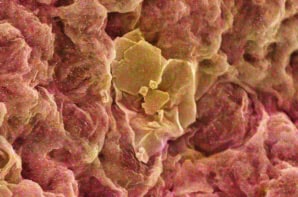Available to watch now, The Electrochemical Society explores the advantages of the electrochemical CNT filter for pathogen removal and inactivation
Want to learn more on this subject?
 Nanotechnology may have the potential to provide solutions to critical problems regarding energy and the environment. Waterborne pathogens are a primary public health concern in developing countries where billions are without drinking water treatment and/or sanitation. This contributes to the global disease burden and results in millions of deaths per year primarily among children. Minimal drinking water treatment for public health needs to include multilog viral, bacterial, and protozoa removal and/or inactivation. Therefore, there is a need for development of novel treatment methods for waterborne and airborne pathogens. Carbon nanotubes (CNT) may provide a solution as CNT-based filters are effective for viral/bacterial removal and CNT have an inherent antimicrobial activity. The conductive nature of CNT would allow for simultaneous separation (filtration) and inactivation (electrochemistry) of pathogens that could synergistically enhance the treatment process. The novel electrochemical CNT filter could be powered by solar (photovoltaic) energy for point-of-use water purification in developing countries.
Nanotechnology may have the potential to provide solutions to critical problems regarding energy and the environment. Waterborne pathogens are a primary public health concern in developing countries where billions are without drinking water treatment and/or sanitation. This contributes to the global disease burden and results in millions of deaths per year primarily among children. Minimal drinking water treatment for public health needs to include multilog viral, bacterial, and protozoa removal and/or inactivation. Therefore, there is a need for development of novel treatment methods for waterborne and airborne pathogens. Carbon nanotubes (CNT) may provide a solution as CNT-based filters are effective for viral/bacterial removal and CNT have an inherent antimicrobial activity. The conductive nature of CNT would allow for simultaneous separation (filtration) and inactivation (electrochemistry) of pathogens that could synergistically enhance the treatment process. The novel electrochemical CNT filter could be powered by solar (photovoltaic) energy for point-of-use water purification in developing countries.
Here, an electrochemical carbon nanotube (CNT) filter is demonstrated to be effective and efficient for the removal and inactivation of aqueous viruses (MS2) and bacteria (E. coli). The CNT filter in the absence of applied potential is effective for the complete sieving of bacteria and multilog depth filtration of viruses. At applied potentials of 2 and 3 V during filtration, the bacterial (>75%) and viral (>99.5%) inactivation were significantly increased, and the number of bacteria and viruses in the effluent was below the limit of detection. Electrolyte concentration and composition did not correlate to electrochemical inactivation consistent with a direct oxidation mechanism. As a result of the increased electromigration and electrosorption to anodic CNT, the hybrid electrochemical filter enhanced viral depth filtration and inactivation. The concomitant electrochemical filtration also significantly reduced negative NOM (SRFA/alginate) interference and fouling effects during viral filtration.
In this webinar, Dr Chad D Vecitis will discuss the advantages of the electrochemical CNT filter for pathogen removal and inactivation and potential for environmental and health applications.
Want to learn more on this subject?

Dr Chad D Vecitis is currently the CTO and co-founder of Nth Cycle, a company focused on novel metal-processing and recycling technologies.He received his BA in chemistry from Johns Hopkins University and a PhD in chemistry from the California Institute of Technology. Vecitis was a faculty member of environmental science and engineering in Harvard’s School of Engineering and Applied Sciences from 2010–2018. His background includes the development of novel technologies including (re)active antifouling materials, carbon nanoarchitectures for membranes and electrodes, interfacial processes in the environment, fate and transport of emerging contaminants, advanced oxidation processes, electrochemistry for energy and the environment, and application of analytical chemistry and material characterization techniques. He has instructed courses on physical chemistry, environmental organic chemistry, water engineering, advanced water treatment, and environmental nanotechnology. Along with students and colleagues, he has published more than 80 peer-reviewed journal articles and is the inventor of a number of patents. He has been invited to discuss his internationally recognized research at many universities, institutions and symposia.



